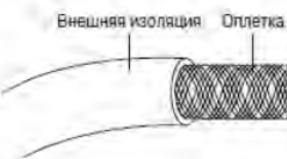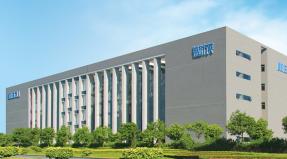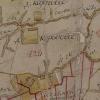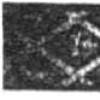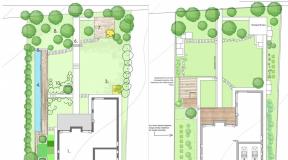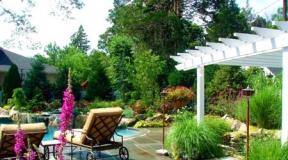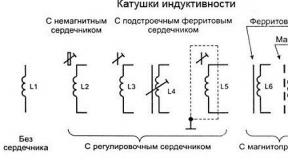What should be the city of the future? City of stones
Instruction
One of the projects is the construction of an eco-city. Instead of uncontrollably consuming raw materials and releasing processed products into the atmosphere, it is necessary to build a system that will not only completely recycle waste, but also renew spent resources. The city must be self-sufficient. Energy can be obtained from the sun, wind, decomposition of organic material. Natural products will be grown in skyscraper farms soaring towards it. Each resident, if necessary, will be able to rent a small plot of land on the roof of his house or in the nearest park to grow herbs and vegetables there. An eco-city doesn't have to be big. The most convenient means of transportation in it will be a bicycle. This will save time waiting for public transport, get rid of traffic jams, and clean the air from exhaust gases. In Russia, the development of "green cities" is carried out by specialists from the Society of Biotechnologists.
The idea of creating a city-home seems bold enough. People don't need to go out at all. To get to a store or office, it will be enough to take the elevator and press the button for the desired floor. Specialists from Takenaka Corporation in Japan have been developing projects for two such cities for several years. The house, which was named Sky City, can accommodate 36,000 people. Another 100,000 people will work there on a permanent basis. The house will have everything: shops, offices, parks, schools, restaurants, hospitals and police stations. The architects are convinced that such a house can stand for at least 500 years if modern high-quality materials are used in its construction. In Russia, the architect Sergei Nepomniachtchi developed several similar concepts. The most famous of them are the city "Birth of Venus" (75-story skyscraper) and "Pancake City" (a house in the form of a huge puck).
The floating cities of the Frenchman Vincent Callebaut are the realization of the biblical Noah's Ark. The architect proposes to create a floating environmental policy called LilyPad. The shell of the city will be double: titanium dioxide and polyester fiber. This structure will allow you to purify the air with ultraviolet light. The city of Callebo will be able to accommodate 50,000 people and will look like a round ship. It is assumed that electric turbines and solar panels, water desalination systems, and numerous farms will be installed in the city. The center of the city will be a huge pool to collect rainwater and stabilize the structure.
It is likely that in the near future people will live in transpoly cities. The farther from the main highway, the cleaner the site becomes from an environmental point of view. It is curious that the highway will be not only transport, but also infrastructural. An oil and gas pipeline will be located under it, information lines and power lines will be located above it, and electric vehicles will move along it. Industrial enterprises will be located on both sides of the road, a little further - office and administrative buildings, after which - a residential sector with 3-5-storey buildings, then fields and reserves. The total width of the city should not exceed 20 kilometers. Architects M. Shubenkov and I. Lezhaeva proposed to build a transpoly city along the Trans-Siberian Railway.
Related videos
From the course of history, some people know that until the late Middle Ages, life in cities was very uncomfortable. Overcrowding, dirt, unsanitary conditions, lack of centralized water supply and sewerage, and as a result, frequent epidemics - this is not a complete list of the inconveniences of that time.
Instruction
Only since the 19th century, the conditions of urban life have changed dramatically for the better. But there is still no consensus on what an ideal modern city should be. A modern city (especially,) has many advantages. These are comfortable houses with all the necessary amenities, many enterprises, organizations that provide an opportunity to get a job, a lot of conditions for a wide variety of leisure activities. But there are also enough shortcomings, among which, first of all, it is necessary to point out bad ecology (excessive noise, gas pollution due to industrial and automobile emissions), traffic jams, crowds and haste, which inevitably leads to nervousness and stress. Therefore, much attention is now being paid to the issues of arranging the city, in order to make it convenient and comfortable.
The construction of new roads, residential and public buildings in the city, the organization of recreation areas, as well as the reconstruction of existing facilities must be carried out so that many important factors can be combined in the end. The maximum possible preservation of the historical appearance of the city should be combined with transport accessibility, providing residents with all the necessary infrastructure (schools, hospitals, shops, etc.).
There are various approaches to solving this problem. For example, in the capital of Malaysia, the city of Kuala Lumpur, a grandiose project is being implemented. According to the plan of its developers, as a result, Kuala Lumpur will become a city, any resident of which will be able to reach any object he needs within a maximum of 7 minutes of leisurely walking: a shopping center, a local municipality building, a branch
Introduction
Section 1. City of the future - fantasy or forecast?
Section 2. The city is one of the most complex systems ever created by mankind.
Conclusion
List of used literature
Introduction
The city, as the most ancient and at the same time the most modern form of human settlement, is the subject of close attention not only of architects, historians, geographers, economists, art critics, but also of a wide range of people of various professions.
Apparently, people learned to mark the boundaries of the territory from animals, so that the exploration, development and marking of the landscape with the designation of the boundaries of the land preceded the emergence of the first permanent settlements.
Urban planning has as long a history as the city itself. So, already in the writing of Ancient Egypt, the city and the fortress were designated by different hieroglyphs, which clearly indicates a fairly in-depth understanding of the nature of the city as a special form of concentration of people in a limited area.
Literature about the city has been replenished for two and a half thousand years. The great physician Hippocrates brought together the experience of the functioning of the Greek city-states, denoting the hygienic rules for the orientation of the streets. Hippodamus is credited with the invention of a regular grid of city streets, which has survived unchanged to our time - suffice it to recall that New York Manhattan has preserved the Hippodamian scheme in its entirety. Plato tried to describe the ideal model of the city, starting from general philosophical judgments about the nature of interaction between people, while Aristotle generalized the experience of the constitutions of dozens of policies and discussed the optimal number of free citizens. Rome mastered the experience of the Greeks, generalized it and standardized it. Standards for the arrangement of public baths, markets, amphitheaters and theaters were formed and reproduced, and these standards were embodied everywhere, from the Nile to the Rhine, from the Euphrates to the Thames, adapting to natural conditions. This experience has been described in numerous works, including Frontinus's treatise on aqueducts and fountains and Vitruvius' extensive encyclopedia. The masters of the Italian Renaissance re-read ancient texts and thought a lot about creating an ideal city, not limited to planning and building issues. So, Filarete carefully describes not only the system of streets and canals, not only the norms of living quarters for representatives of different classes, not only the rules for organizing trade, but even the schedule of classes and menus for lyceum students. Literature and painting were far ahead of practice - people who still lived in medieval houses read treatises and looked at frescoes depicting endless colonnades and domed buildings that did not yet exist. The history of urban studies and urbanization proves that decades, sometimes many decades, pass from the birth of ideas to their implementation in the fabric of cities.
Section 1. City of the future - fantasy or forecast?
“Cities of the Future are a great danger, which are invented every day by urban planners who consider themselves prophets. Like Wells, they transfer the conditions of today into the future, only exaggerating some of these characteristic features, ”wrote the Italian architect Porchina.
“The basis of any creativity is the struggle of a healthy form that is gaining strength with a fake, imitative form” (A. Malraux). The struggle of the gaining strength of architectural and town-planning forms with fake, imitative forms is not devoid of drama. Gropius, Perret, Mies van der Rohe, Le Corbusier and other creators of modern architecture, who throughout their lives had to fight against academicism, in their declining years witnessed the complete victory of their ideas. Le Corbusier was so brilliant that he saw his followers not among those who imitate him, but among those who fight against the imitation of Gropius, Perret, Le Corbusier. At all times, the ideas of innovative architects encounter stubborn resistance. There is a confusion of concepts. The architecture of dreamers, the architecture of science fiction writers, the architecture of the future - these are purely conditional labels that are sometimes stuck at random on works of sometimes diametrically opposed directions. Groundless dreamers and masters with the gift of foresight are thrown into one heap.
Very groundless fantasies in the field of architecture are not uncommon. Most often they appear in painters, and this is confirmed by the history of art. For example, Hieronymus Bosch and Pieter Bruegel, along with quite realistic images of buildings, sometimes painted some structures that could be mistaken for the fruits of a feverish imagination. Inspired by the Tower of Babel, Desiderio and then Piranesi dream of grandiose architecture.
Leonardo da Vinci, who once depicted an ideal city, was considered a utopian, although he himself did not doubt that he was right. The architectural ideas of Leonardo were picked up and developed several centuries later in 1914 by his compatriot Antonio Sant'Elia. The architecture of the future Sant'Elia was also recognized as utopian until it was suddenly discovered that his projects, in which the large-scale structure of the city was dramatically changed, met the urgent requirements of our recent time. The picturesque architectural compositions of Bosch, Brueghel, Desiderio, Moreau were monstrous combinations of reminiscence and grotesque; they tried to combine impossible styles into a kind of scenery for a theatrical apotheosis. At the heart of the architectural fantasies of Leonardo da Vinci and Ledoux, for example, are engineering designs. These are not fantastic dreams at all, but fantasies generated by foresight. The house that Ledoux intended to build over the falls was undoubtedly the fruit of a fantastic design. However, two centuries later, Frank Lloyd Wright built his famous house over the falls in the USA. Such a continuity of design makes it possible to speak not of fantasy, but of foresight. Gigantomania, megalomania - this is how the works of visionary architects were characterized. Neither Ledoux nor Bulle escaped these criticisms in their time. But isn't modern Manhattan more fantastic than Bulle's most incredible designs? Ledoux and Bulle were the first to embark on the path of technical fantasy back in the 18th century. Rene Sarger, a French architect and engineer, wrote: "Modern science fiction writers remain incomprehensible only to those who do not imagine the truly fantastic possibilities of new technology."
One cannot accuse science fiction writers of utopianism – a future-oriented creative search is inseparable from utopia, the problem should always be considered from a broader and more far-sighted position. Interesting urban planning ideas and futurological proposals were proposed by architects and designers from various countries in the middle of the last century. This time is the beginning of the modern scientific and technological revolution - the development of nuclear energy, space exploration, chemicalization of the national economy, the introduction of cybernetics and bionics into production. All this opened up a qualitatively new stage in the design of cities of the future. In the same years, the concept called “demographic explosion” was realized, which also determined the amazing scale and perspective of design. The projects of innovative architects are even more extraordinary, as they completely abandon the architectural heritage. An example is bridge cities. I. Friedman developed a project of a city-bridge thrown across the English Channel, in its boldness surpassing the architectural fantasies of Filarete or Antoine Caron.
The projects of the so-called spatial urban planning, advocating the rational use of land, against the "sprawl" of cities, also offer the convenience of spatial connections between parts of the city using new possibilities of building technology. In the cone cities designed by Paul Maymon, the diameter of the hollow reinforced concrete support is 20 meters; it is used to accommodate elevators and manifolds for all vertical communications. The cables attached to the support resemble a huge cobweb. Any elements of urban development can be suspended from these cables. I. Friedman proposes a project of a spatial city on the territory of Paris: the new city is lifted into the air above the old quarters of Paris and above the Seine. Gaps between residential buildings provide insolation of the earth's surface.
In the "crater city" project, the architect Chaneac creates a spatial city using typical elements.
The structural basis is made up of artificial levels - platforms and star-shaped concrete "hedgehogs". The structure is filled with prefabricated free-form volumetric cells, which are installed on the load-bearing structures. A composition using such residential units on the scale of a large residential complex would not have received a balanced, static construction; it would form a living, ever-changing combination of residential units.
The projects of the Archigram group develop the idea of "single use" architecture. All elements of the city are designed for operation during the obsolescence period. The shortest period is for a residential cell (15-20 years). Therefore, new cells can be constantly "connected" to the structure of the city.
The project of the city "Plug-ee-city" ("city-socket", "city-plug"). Architect Cook proposed a solution where a grid-like large-module structure contains all the horizontal, vertical and diagonal connections necessary for the city, transport, pedestrian and the most important types of services. Elements of the city are assembled and replaced by powerful cranes.
In the cybernetic urban planning of Nikolai Sheffer, the city of work and study is designed as a high-rise volume, while the city of recreation and entertainment is “spread out” horizontally.
The city-funnel of Walter Jonas (in the form of a cone or pyramid turned upside down) is, as it were, an artificial valley; the apartments face the inner space of the funnel. These funnels, interconnected by lintels in the upper part, form the city.
Each funnel is an independent quarter. Jonas developed the project of the "urban unit of the future" ("Intra-house") in the form of an open multi-tiered funnel with an internal enclosed space. The objective of the project is to revive the urban commune, to free up the surface of the earth as much as possible.
Pere Laeia's "Mobile City" project envisioned a city that would include a permanent part and a movable part, which would consist of individual interlocked cells mounted on rails. Movement around the city was to be carried out with the help of suspended sidewalks.
Arthur Quarmby, who designs plastic living cells, has given high mobility to a spatial system of cells suspended from a central hollow carrier mast. These cells can be detached from the supporting structure and, at the request of the tenant, turn into an individual house installed on the ground, or transported to a new location and attached to other supporting structures of a similar type. Projects of cities on piles and floating cities have been developed. Scientist Jacques-Yves Cousteau proposed a solution for a house underwater.
The new movement opposed the ideas of the “functional order” underlying the dream of the Athens Charter of “radiant cities” with its understanding of the basic conditions of urban planning: the dynamism of the era, the mobility of the elements and functions of the city. Their ideas were reduced mainly to the development of semi-fantastic projects and ideas of cities of the future, based on the limitless possibilities of technology, as well as on their own ideas about the development of future social conditions for urban planning. Aesthetic criteria are almost impossible to predict - in contrast to the prediction of the trend of technical and social progress. As a rule, attempts to imagine the future in its concrete reality are not successful - they seem too implausible from the positions of today and too naive when they go into the past. Still, a vision of the future is necessary. Expressing ideas about the future, the specialist gets the opportunity to express his worldview directly, concretely and accessible to everyone.
The synthesis of a generalized idea of the future implies something more than the sum of special knowledge, namely, a holistic and dynamic picture. Of course, such a picture can only be created at the cost of certain conventions and simplifications. However, attempts to link all aspects of the forecast into a coherent picture can often give more than the most in-depth study of one of them, without regard to all others. Therefore, each researcher has the right to construct his own generalized image of the future, incorporating a comprehensive assessment of those problems that seem to him the most relevant, in their natural movement and relationships.
Section 2. The city is one of the most complex systems ever created by mankind
One of the most difficult problems of urban planning is to create the most favorable conditions for human existence. It touches every aspect of a person's life; its solution involves a wide variety of issues - economic, social, political, medical, sanitary, biological and geographical. A city planner must also be an expert in spiritual culture, a psychologist - a "human expert". One of the most important problems is the correspondence of a person's daily activities to his ideals and worldview. The architect should strive to create the most favorable conditions for human life, taking into account his needs and requests.
In our time, progress in the field of science is so rapid, the possibilities of practical activity and the development of human mental abilities are so unlimited that it is not even possible to predict with sufficient certainty where all this may lead. It is difficult to predict what will be the demands of people in the year 2500, what they will consider the norm of behavior for themselves. We live in a rapidly developing, rapidly changing world. At the same time, some aspects of this development are seriously disturbing. Wastes from industrial production pollute air and water, fauna and flora, disrupt sustainable ecological communities in nature, and worsen the sanitary and hygienic conditions of people's lives. The ever-increasing pace of life, the need to process the volume of information that increases many times over the life of one generation, the inexorable introduction of a standard into consumption and culture - are paid for by huge expenditures of nervous energy, and in some way impoverish emotional life.
Urban planning far exceeds the complexity of architectural design, the skill of linking together the social, economic, geographical, etc., reaches its full result only when the city appears before us in the fullness of its essence, is perceived by all senses. The skill of professional planning, which has absorbed the concentrated knowledge accumulated by many generations of urbanists, is ultimately embodied in the comfort of being and the comfort of a visible image. And this image is infinitely important, as it includes a wide range of elements - from the first glance at the city from afar to the look at the house across the street or through the jets of a fountain in a small square. The city is also something irrational, each city is unique in its character, destiny, history.
Man is also conservative by nature. Observed first in the West, and now in our country as well, the explosion of material "nostalgia", interest in objects 40-50 years old that do not represent artistic value (kitsch), is undoubtedly evidence of longing for a stable thing of the past. Previously, this transsubjective world was quite stable - a person was surrounded by things inherited from the previous generation, and the new ones looked like the old ones. The shape of the clay pot has remained virtually unchanged for thousands of years. The automaticity of perception is a great protective mechanism of the psyche, it cannot be violated with impunity. Everything changes too quickly: clothes, dishes, furniture, interiors, architecture. In a world organized in this way, only one's "I" can be felt permanently. Everything else is changing shape, rushing somewhere faster and faster. How long can one maintain a firm sense of one's "I" in such a situation? Only prudent gradualism and unhurried succession can preserve the spiritual "I" and the mental health of a person in this all too soon changing world. It is almost impossible to write a universal, generalizing recipe for a dream city
Conclusion
What will the city be like by the middle of this century? This question needs to be answered, because, unlike fantasy, the foundations of a real city of the future are being laid now. But it is difficult to answer it. It is necessary to understand the very nature of urban planning, how models of the subject, physical organization of urban space are associated with worldview positions, on the one hand, and with economic, managerial rules of the game, enshrined in regulations and standards of behavior, on the other.
Over the past half century, the number of works devoted to urban studies, its various aspects, has not only grown enormously, but continues to grow. Opinions change, we have left behind the belief of people like Camillo Sitte that you can once and for all set the rules for creating a beautiful city, and people like Le Corbusier that the will of the artist can build a city anew. The highest complexity, and therefore a special charm, are those ensembles and cities that grow over time, by adding new elements so that the new whole embraces the former whole and includes it in itself. The task of the architect is also to be able to subordinate his decision to the decision of his predecessors. The cult of authorship, the author's ambitions should not conflict with the long-standing culture of growing the ensemble.
It seemed to people at the turn of the 19th and 20th centuries that technical progress would solve all the problems of the city and citizens by itself. We now know that this progress, the scale of which and the scale of the consequences of which they could not imagine, not only builds and develops cities, but also mortifies them. We must see anew the evolution of the city as a city of people. Those who create this city consciously, and those who re-create it every day with their behavior in the urban environment.
References:
V.L. Glazychev. Urbanistics. Publishing house "Europe", Moscow, 2008.
A.E. Gutnov, I.G. Lezhava. The future of the city. "Stroyizdat", Moscow, 1997
Michel Ragon. Cities of the future. Mir Publishing House, Moscow, 1969
Red book of culture. Publishing house "Art", Moscow, 1989.
Posokhin M. City for a person. Progress Publishing House, Moscow, 1980
Khorev B. Problems of cities, Moscow, 1975.
What should be the city of the future?What is the city of the future, and how should it be? Science fiction writers, designers, and engineers think about these questions. At the same time, they often seek answers to these questions in close interaction with each other.
As a result, outlined fundamental points that become an integral part of any modern project of the city of the future. This is a concern for the environment and ease of movement, saving space and striving for vertical development.
Let's get acquainted with 10 projects of the cities of the future. Some of the presented conceptual projects are only in the development stage, while others are already under construction in order to bring comfort to their residents and impress the imagination of their guests in a few years.
City without cars

The Chinese government undertook to build a city in which it would be possible to do without cars, approving the project of the Great City settlement. The "Great City" is being built from scratch not far from Chengdu. The city will be designed for 80 thousand inhabitants, and any movement around it can be done on foot or by bicycle without any difficulties.


Its unique design will help you quickly get to anywhere in the city - the residential center will be located in the very center of the Great City, and roads, office and administrative buildings - around it. Thus, to get on foot from the center to the outer ring of the parks, you will need to spend no more than 10 minutes.
According to the project, the Chinese city of the future will consume 58% less water and 48% less electricity. At the same time, the amount of waste in it will be 89% lower than in cities of similar size.
City without carbon emissions
If the Chinese Great City is a city without cars, then Masdar in the UAE is a city without cars and without skyscrapers.

Masdar is already being built from scratch in the middle of the desert near Abu Dhabi. The main feature of the city will be its complete independence from traditional energy sources. Instead of oil, gas and coal, Masdar will receive energy from the sun, wind and geothermal sources. Thus, it will become the first city with zero carbon emissions.


In this city of the future, a special place will be given to high-speed public transport, gigantic "sunflowers" will cover the streets from the heat of the day, and the energy accumulated by them will be used only at night.
Green city in the desert

Dubai is another city from the UAE that can become the "green" city of the future. Baharash Architecture specialists created a project that used the world's leading achievements in eco-construction.


Their project includes 550 comfortable villas, educational institutions and organic farms, which will be powered by 200 square kilometers of solar panels.
Solar panels will be able to provide half of the city's needs, and the use of environmentally friendly public transport will offset the rest of the carbon emissions.
"Green" city with dense buildings

The Kjellgren Kaminsky Architecture bureau believes that ultra-dense buildings are one of the hallmarks of the city of the future.
The specialists of the bureau propose to turn the second largest Swedish city of Gothenburg into the city of the future. According to their plans, ultra-dense buildings and the use of rooftops for vegetable gardens, solar panels and windmills will fully satisfy all the needs of residents for food and energy.
In addition, such development will significantly reduce traffic and help make the city river the main transport artery.
vertical city

John Wardle Architects has suggested what the Australian Melbourne might look like in 100 years. Their project Multiplicity (“Multiplicity”) demonstrates a huge metropolis, growing not in breadth, but up and down.
To move around Melbourne of the future will be used underground and air routes, and over the entire city will create a common transparent "roof" that will be used to grow food, collect water and solar energy.
City of walkers

The Puerto Rican city of San Juan is another city that has decided to go completely car-free. But unlike Great City and Masdar, San Juan is not built from scratch, but rebuilt.
The city authorities, concerned about the rapid decline in the number of residents, are investing $ 1.5 billion in rebuilding. The main task is to abandon cars and create the most beautiful pedestrian zones. The San Juan authorities expect that an environmentally friendly city with excellent opportunities for relaxing holidays will attract both tourists and future residents.
A city with a comfort center

The ReThink Athens competition was designed to find a project that would completely rethink the center of the ancient city, making it more peaceful and clean.
The winner of the competition was a project that proposes to abandon vehicles and fill the center of Athens with green areas to create more comfortable conditions for walking. A small redevelopment will allow you to easily get from the center to neighboring areas on foot.
lawn city

Shang Sui is another Chinese city of the future in our review. The MAD Architects studio is engaged in the creation of his project, and the idea itself is based on the veneration of the water element and mountains in China.
Shan-Sui is a city with a large number of multifunctional skyscrapers. In each of them, dozens of public places with pieces of wildlife for a relaxing holiday and contemplation will be available for residents and guests.
3D city

One of the most original projects of the eVolo 2011 Skyscraper Competition was the NeoTax project. Its essence is in the construction of houses not only upwards, but also to the sides above the trees. Simply put, houses in the city of the future will occupy only a small area on the ground, but in the air at the level of 10-20 floors they will grow in all directions.
Thus, it will be possible to save green spaces, and the buildings themselves, through the construction of additional modules, will offer people a much larger area for living and working.
City of stones

Drawing his ideas from natural forms, the Belgian architect Vincent Callebo proposed a city of the future project for the Chinese city of Shenzhen.
Each building, according to the idea of Callebo, will look like a pyramid of sea pebbles, placed on top of each other. The architect emphasizes that such a design will fill the city with positive energy and will make it possible to equip gardens and kitchen gardens directly in residential towers.
In addition, "pebble pyramids" will have wind turbines and solar panels, and the high density of apartments and houses will reduce the role of vehicles.
We are accustomed to living in a constantly changing face of cities. Old buildings are disappearing - new, familiar modes of transport are gradually disappearing into oblivion - more environmentally friendly analogues remain. Some architectural styles crowd out others. These changes happen all the time, and we have already stopped noticing them. And if you look 10-20 years ahead and imagine what the cities of the future look like, built from scratch and overflowing with technology?
And then fantasy draws cities on Mars, cities - space stations, settlements in other galaxies ... Perhaps this will happen. But for now, we will land back on Earth and talk about the projects of the cities of the future, which will change the face of not only countries and entire continents, but the entire 21st century.
"Great City" without cars, China

"Great City" is a green city project built on an area of about 3 square kilometers near the city of Chengdu. It is able to solve China's well-known problem - infrastructure congestion - by almost completely abandoning cars. The city does not consume much energy, does not pollute the environment with carbon dioxide emissions, more than half of its territory is occupied by green spaces, which can be reached from any home in just two minutes.
Eco-parks will process sewage, solid waste and produce electricity. The local climate is not well suited for solar panels, so all buildings are designed to maximize the use of wind energy.

The Great City will become a home for 80,000 people, some of whom will be employed on the project itself. The distance between any two points of the city can be covered on foot in 15 minutes, the need for a car is eliminated. But not completely. Half of the road space will be allocated for non-motorized vehicles. The city will be connected with Chengdu and its surroundings through a network of transport communications, which will form a regional transit hub in the center of the city, taken underground.
Desert Rose, Dubai

Green Desert Rose.
“Desert Rose” is the name of the 14,000-hectare satellite city project, which will use only environmentally friendly transport, and will be connected to Dubai by a surface metro line. Electricity will be supplied from alternative renewable sources. In addition, air-conditioned walking paths are provided in hot weather. The construction of the city will take ten years and will take place in four stages.
The project includes 550 comfortable villas, educational institutions and organic farms, which will be powered by 200 square kilometers of solar panels. Solar panels will be able to provide half of the needs of the city, and the use of ecological transport will compensate for the rest of the carbon dioxide emissions.
"Floating Greens", Japan

Growth is a standard solution for the development of cities in the Asian region, but for Japan this method is not always good due to the frequent threats of earthquakes and tsunamis. But then the Japanese found another way out - to build cities on the water! Such a city was the Floating Green project, consisting of ten islands, similar to water lilies, and with central towers about a kilometer high.

The towers must accommodate more than 30,000 people. The upper part will create space for work, shops and service companies. In the middle of each tower is a farm site for growing fruits and vegetables. The base of the island is used for a residential area that can accommodate 10,000 people, as well as forests and beaches. Each floating oasis will be anchored to the bottom of the ocean.
The world's first underwater city, Japan

Spherical city under water.
But for the Japanese, the idea of a floating city is far from new: by 2035, they plan to create the world's first underwater city, Ocean Spiral. It will be a spherical structure capable of accommodating up to 5,000 people and receiving energy from the bottom of the sea. Oxygen will be converted from carbon dioxide, and a large difference in temperature and pressure will be used to generate electricity.

Inside the spherical structure there is a skyscraper designed to accommodate and work 5,000 people.
The form of a high-tech city is huge balls with a diameter of 500 meters and a capacity of 5 thousand people. The balls will be able to float on the surface or sink under water along a giant spiral structure, extending to a depth of 15 kilometers, where a mining plant will appear. The system of huge balls should save people during earthquakes and tsunamis. The cost of such a structure is estimated at $ 25 billion, and rubber will be the main building material.

A solid spiral rests on the ocean floor, on which the mining plant is located.
Project of the Arctic city "Umka", Russia

A unique project called "Umka": they are going to build a city on the permafrost beyond the Arctic Circle. Based on the structure of the International Space Station. The residents of the city will be provided with a water park, an amusement park, their own production of bread and fish products, houses, scientific laboratories, schools, a temple, hotels, and a hospital. Public transport will run on electricity. The size of such a city will be 1.5 kilometers by 800 meters, and the construction will cost about 5-7 billion dollars.

The proposed location is Kotelny Island in the archipelago of the New Siberian Islands in the Arctic Ocean (about 1.5 thousand kilometers from the North Pole).
The city is going to create a controlled climate system using space and other advanced technologies. The source of electricity will be a floating nuclear power plant, and all types of waste will be processed at two plants.
India's first smart city
Megacities such as Delhi and Mumbai are famous for their developed industry, infrastructure, financial markets, skilled workforce and the presence of foreign companies. But most of India is a poor province with a very low standard of living of the population. That is why the idea of building an industrial corridor (DMIC) between the largest megacities was born, which will allow the provinces to develop, creating new jobs and high-tech infrastructure. Such a project would cost $90 billion.

India's first smart city Dholera to be built as part of Delhi-Mumbai Industrial Corridor Project
Let's note one very pretentious fact: the Delhi-Mumbai industrial corridor is one of the most important parts of the plan to build hundreds of smart cities throughout the country. Hundreds, Carl! In India! And the first such city will appear in the state of Gujarat. Dholera will be built in ten years and will become a real technological gem of India: digital traffic control, no pollution, traffic jams and crowds of people. By comparison, Dholera will be twice the size of Mumbai.

The Gujarat International City of Finance and Technology will be one of India's very first smart cities.
In the same state, another no less futuristic project is underway - Gujarat International City of Finance and Technology (GIFT). It also involves providing the population with the infrastructure of the future and many jobs. The complex will include offices, schools, residential areas, hotels, a conference center and retail space. And the most striking building of this city will be the Diamond GIFT Tower.
"Khazar Islands", Azerbaijan
To build a new smart city, Azerbaijan decided to create an artificial archipelago of 44 islands with a total area of 3,000 hectares. The Khazar Islands will have an airport, a yacht club, a Formula 1 track, homes for 800,000 residents, and the world's longest boulevard, 150 kilometers long. The cost of the project is estimated at $100 billion.

Azerbaijan Tower can become the tallest tower in the world.
But the main attraction of the archipelago will be Azerbaijan Tower. Its height will reach 1050 meters, which could break the record for the tallest Burj Khalifa. The Azerbaijan Tower will be very strong and will be able to withstand a magnitude nine earthquake. The skyscraper was planned to be completed by 2018-2019, and the islands by 2022, but last year construction was postponed indefinitely due to lack of funding.
China's "cloud dweller"

Cities in the clouds are a dream for densely populated areas of the planet.
In the Chinese city of Shenzhen, it is planned to build a sky city - a new business center of the world. It will have residential modules, office and IT clusters, public and commercial zones and green terraces. The city will include three interconnected towers approximately 600 meters high. The total area of the building is commensurate with the area of the Principality of Monaco, and the windows of the towers will overlook Hong Kong. And it's done on purpose. Local authorities want to demonstrate the new financial opportunities of the region to Hong Kong, which is an old financial model of the world. A smart sky city will be able to fully provide itself with environmentally friendly electricity.
Earthscraper in Mexico

Not a bunker, but a city of a future new type - an earth scraper!
While other countries see the future of cities in the clouds, Mexico has found another way - underground. The Earthscraper is a 65-story inverted pyramid with an area of 7618 square meters. It will appear in the center of Mexico City. The roof of the building will be a transparent glass panel 240 by 240 meters. "Outside" it will look like a public square, where residents can enjoy walks, concerts, exhibitions and military parades. The energy source for the building will be geothermal energy, which will make the underground city self-sufficient.
China's first megalopolis

The size of the new Chinese city will exceed the size of London by 137 times.
In China, it is planned to create a city-megalopolis Jing-Jin-Ji, which will unite Beijing, Tianjin and Hebei. It is expected to be home to 130 million people, and its size (212 thousand square kilometers) will exceed the size of more than half of the individual countries of the world. Each city in this association has its own role: Beijing is a cultural and technological region, Tianjin is a manufacturing region, and small industries will be concentrated in Hebei. To ensure that the journey from one city to another takes no more than an hour, new high-speed trains are being built.
City on the water, printed on a 3D printer, Rio de Janeiro

Worthy of attention is a very unusual concept of the Belgian architect Vincento Callebo, who proposed to build a city on the water in the coastal zone of Rio de Janeiro. The building material will be a composite of recycled plastic waste and algae, and the city itself will be printed using a 3D printer. Building structures can grow on their own using calcium carbonate in the water to form an outer skeleton and semi-permeable membranes to desalinate seawater, and microalgae can be used to generate energy for heating and climate control.

Externally, residential structures with a diameter of about 500 meters will resemble jellyfish. They will include workspaces, workshops, recycling plants, science labs, sports fields and farms. Such a city will be able to provide housing for about 20 thousand people.
The architect solves the problem of lack of food with the help of huge farms (Farmscrapers) in which plants will be grown. The place of the farms is at the very top of the structures. One of the main tasks of such a city will be the construction of scientific centers for ocean research.
Instead of a conclusion: still about Mars

For some, fantasies about cities on Mars become not just the plot for a science fiction book, but an entire architectural project.
The choice of the director of the C: SA / Center for Contemporary Architecture Irina Korobina.
Designing the cities of the future usually begins at a time of change and national upsurge - remember at least the avant-garde 1920s or the thaw 1960s. True, the paper projects of the “stagnant 80s” also seem to be about the future, but they appeared as a response from our architects to a request from Japanese companies with their futuristic competitions.
Today is the time for development and real estate. Few people think about the future: the thirst for “quick money” determines the present. Therefore, those few projects and ideas that meet the challenge of the 21st century become especially valuable.
Firstly, these are innovative concepts that outline the directions for the development of cities and the organization of their life. Secondly, these are projects of city-forming architectural structures, which contain a powerful urban development potential.
And if the former are more like visionary and science fiction, which, however, very quickly penetrates into our lives, then the latter are real projects that can be implemented even tomorrow. All that is needed is political will and a desire to create smart architecture that is important for the future of the country.
Project. Workshop of Mikhail Khazanov, "Kurortproekt"
.jpg)
Nagornaya Street in Moscow is a dull and unattractive place. The authors of this all-season sports complex create architecture as an artificial natural landscape, not only justifying the name of the street, but also imparting a futuristic image of some new civilization to this typical building area.
The innovative project convincingly develops a very interesting direction in modern architectural practice - blurring the boundaries between landscape and building, interior and exterior, technology and ecology. Perhaps this will be the cities of the future - as if growing out of the earth's crust and the surrounding nature. The new building is planned for construction and promises to be an architectural event of high international class.
Project. Thomas Leeser, Leeser Architecture (USA)
.jpg)
To build a museum as a research center in the permafrost zone, where perhaps the most preserved and cutest mammoth in the world has been discovered, is a promising idea in itself. The project of the American Thomas Lizer, known for his innovative solutions that combine architecture with science and technology, was the best in the competition held by the Republic of Sakha.
.jpg)
The museum, designed by Lizer, is a separate ecosystem that is sensitive to the conditions of permafrost and maintains them in the required mode. This project is an "exhibit" in itself, no less interesting than the Yakut mammoth. It is also the embryo of the city of the future in this mysterious land. Its construction would become an event in the entire architectural world and the best proof that the region, which today is associated exclusively with Yakut diamonds, is capable of more.
Project. Workshop of Mikhail Khazanov
.jpg)
The centrifugal force of urban development, bursting Moscow from the inside, is restrained by its radial-ring structure. This creates incredible problems - transport, functional, logistical. The idea to break the rings and release this powerful energy in the direction of St. Petersburg was announced back in the 1920s by Nikolai Ladovsky in a parabolic scheme for the development of the capital. Mikhail Khazanov takes the next step - "draws" this energy into a line. The railway line between Moscow and St. Petersburg is turning into a powerful energy and communications structure that performs all the necessary technological and service functions. Such a connection of the two capitals is a politically correct and quite viable idea. And for those who are forced to constantly ply back and forth in the "Red Arrow" - and completely necessary.
Center of Kazan
Project-concept for the development of the urban center under the leadership of José Acebillo (Spain-Switzerland)
.jpg)
Kazan is a beautiful city, but, like many Russian cities, today it is going through a difficult period in the formation of capitalism. Objective reality requires more intensive development. However, the first experiments led to mistakes - the loss of a whole array of historical and architectural heritage and, at the same time, to the expansion of city boundaries.
The strategy for this project was developed under the guidance of the author of the Barcelona update. Its task is to stop the growth of the city spot and optimize the use of existing urban development reserves. For this, the following methods are used: compaction of the urban fabric due to the diversity of residential and public buildings, activation of key points of the urban structure, establishment of links-corridors between these points, and, finally, the formation of clusters in which new structures are layered on existing ones.
If the project does not lose its ideas during the implementation process, Kazan will receive a modern living environment and retain its historical identity.
Trans-Russia XXI
.jpg)
This is a project of a linear city across Russia from ocean to ocean. It implies building up the urban fabric on an endless energy ridge, to which the main transport and service communications are being pulled. Offshoots with independent residential or industrial formations depart from the ridge. It is clear that in the foreseeable future the issue of implementing this project is not worth it. Nevertheless, the concept itself is revolutionary. It allows you to rationally, economically and conveniently organize life throughout the country - without transport and energy collapses, with convenient communications and well-established logistics of interaction between all elements of this multilayered structure. It remains to figure out how not to lose the forests and not scare away their inhabitants. And so the idea is quite capable of becoming national.
CITY OF THE FUTURE.
.jpg)
Our modernity is very different from how it was seen when it was still the future. Looking at the paintings of the futurists and visionaries of the past, say, at the turn of the 19th and 20th centuries, we involuntarily smile at the seeming naivety of the authors. Multi-story stone houses, the sky is filled with wooden frame airplanes, the space between heaven and earth is filled with multi-level railways on overpasses, on which old-fashioned steam locomotives run, and retro cars crowded in a terrible mess on the streets. We do not see any of this around. Trains in big cities became electric, they were hidden under the ground or left on the ground, in the sky above the city, it’s not so often that completely different cars than in the pictures - metal - appear: planes and helicopters; multi-level overpasses were more suitable for cars of a completely different look and quality, moving according to strict rules. For all the dissimilarity of futuristic pictures to the reality of today's urban life, such inaccurate forecasts create an ideological soup from which reality then crystallizes.
The idea of an ideal city of the future has excited people for a long time. Suffice it to recall the image of Heavenly Jerusalem from the Revelation of John the Theologian, where the city is described as a cube with a side of 12,000 stadia: "The city was pure gold, like pure glass." Heavenly Jerusalem is a goal beyond earthly life, unrealizable on this earth, but the very image of the future city is repeated more than once in the temples and monasteries of the Middle Ages: Mont Saint-Michel Abbey in France, St. Basil's Cathedral in Russia. In the New Age, the idea of an ideal city began to shift more and more from the area unrealizable on earth to the area feasible by human forces. The first attempt to build an ideal garden city was made by Claude Nicolas Ledoux in the 18th century in France, and was never completed. At the beginning of the 20th century, many architects, including Le Corbusier, also thought that they would create ideal cities for an ideal society. Today we look disappointed at the fruits of their labors, but the idea of improving the urban environment is becoming more and more relevant under the onslaught of reality.
The growth of the world's population, urbanization, the complication of production processes, economic relations, the complication of the environmental situation, socio-psychological and transport problems show that the modern city is at the limit of its ability to meet the needs of the population. A modern small city is not able to provide the variety of opportunities necessary to maintain an active young population, it is becoming empty. Megacities, on the contrary, attracting ever larger masses of people with opportunities, are increasingly coping with their urban functions. Residents of megacities suffocate from gases, loneliness, stress and conflicts, mental disorders, lack of time and energy to overcome huge distances. A big city, a priori deprived of the advantages of a small one, is now losing its own. In different parts of the world, the question is different: in Holland there is simply not enough space for life and production, and it is being reclaimed from the sea, in Mexico there are severe transport problems, Russia desperately needs the revival of hundreds of cities from the Black Sea to Kamchatka to hold the giant empty spaces . Therefore, the development of new forms of human settlement, new principles for constructing urban and, more broadly, inhabited space is not idle talk, but a severe necessity.
It is clear that almost any of the existing and currently being developed projects of the city of the future is only an approximate vision of the future "through a cloudy glass." Many of these projects will enrich the reality of the urban environment only with some individual elements or principles, but in general they will remain utopian. The most realistic projects will be close to the real image of the city of the future, which will absorb elements of other, more costly and fantastic ones. As has already happened in the history of urban planning, not one idea will be embodied, but a whole bunch of ideas that enrich each other and are bizarrely refracted through the prism of reality. It is up to everyone to fill the future habitable space with life; what it will be depends on each of us. Let's consider some concepts of the cities of the future.
.jpg)
The reality of the present moment seems to prompt the question itself: instead of exploiting the environment by consuming raw materials and throwing harmful waste into it, can the city, on the contrary, cultivate the natural environment, completely processing its waste and renewing the consumed resources? The question is open, and the final answer to it will give time. However, conceptual projects of such "green" cities already exist. It is a self-sufficient city that generates the energy it needs from renewable sources such as sunlight, wind, organic waste, geothermal energy, dissipated heat; has its own agriculture in vertical skyscraper farms, on rooftops and in parks. Such a city should be designed on the principles of passive architecture, when climatic comfort is achieved by the appropriate location of streets and houses, taking into account local prevailing winds, terrain features and solar lighting. This makes it possible to minimize special technical means for maintaining a suitable climate, entrusting their functions to cleverly built and correctly located walls.
The size of such cities is small and designed for pedestrians, cyclists and environmentally friendly public transport. This allows you to abandon unnecessary non-environmental vehicles and saves time and people's health. The facades of the houses are landscaped, high-rise buildings are covered with bushes and trees to their full height and carry gardens with mighty trees. Several projects of this kind are already underway. This is the city of Masdar, built from scratch in the desert of Abu Dhabi and the city of Almere, completely standing on the territory reclaimed from the sea, in Holland. In Russia, "green" cities still exist in the projects of the Society of Biotechnologists of Russia under the leadership of Raif Vasiliev.
.jpg)
Modern technologies make it possible to build buildings of such impressive volumes that they can fit the population of an entire city. So why not try to place the entire complex urban organism within the walls of one giant house? Similar cities and settlements, merged into a single monolithic volume, existed in ancient times in the Middle East, in a sense, densely built-up castles and cities of the Middle Ages can be attributed to this type of settlements, the same concept is expressed by the image of Heavenly Jerusalem, the city-temple, embodied in the many-domed Russian churches.
Today, there are many such projects: these are tiered citadels spread on the ground, and skyscraper cities. The latter, for obvious reasons, are especially relevant in the overpopulated countries of Asia. In such a city, residential and working tiers are interspersed with parks, technical and economic tiers. Two such projects were started by the Japanese corporation Takenaka at once. The largest of them - the kilometer-high Sky City ("Heavenly City") - can become a shelter for thirty-six thousand people and a workplace for another hundred thousand. In such a skyscraper, everything is provided for a full life without the need to leave it: schools, parks, shops, restaurants, theaters, hospitals, offices. It is clear that in such buildings there will be separate subcultures leading a specific way of life.
According to the authors, the construction of such buildings is already possible today, and if high-quality materials are used, such a city will stand for about five hundred years. In Russia, architect Sergei Nepomnyashchiy is designing city-houses and has proposed several concepts, including the 75-storey city "The Birth of Venus" and the "Pancake City" sprawled across the landscape in the form of a giant puck.
.jpg)
An example is the Lilypad project - a floating ecopolis for climate refugees, something like Noah's Ark. The name is derived from the English words "lily" - "lily" and "pad" - "dwelling", which corresponds to both the external image and the internal structure of the floating city. The author of the concept is the French architect Vincent Callebo. The floating settlement has a double shell, consisting of polyester fiber and a layer of titanium dioxide, which, under the influence of ultraviolet light, purifies the air. It is designed for fifty thousand people, refugees from the effects of global warming, and is a huge round ship, stuffed with all sorts of "green" technologies. Solar panels, tidal electric turbines, wind turbines, various water purification and desalination systems, own farms that fully provide the city with food. In the center of the "lily" is a rainwater collection tank submerged in the ocean and stabilizing the floating city.
The round structure has three elevated buildings along the perimeter, their slopes facing inwards, like a funnel, forming an artificial landscape and organizing a drain. The surface of the reservoir, facing the ocean, is a plantation of marine plants, housing and research laboratories are also located there. Plantations are located in other parts of the floating island. The city is conceived as a harmonious component of the ecosystem, which is in symbiosis with the surrounding ocean, cleansing it from harmful products of human activity. To date, the project exists only as a concept and has not been worked out in detail.
The idea, for all its beauty, is difficult to implement. Its radicalism and high cost scare off investors, and the author of the project considers it possible to mass-build such cities only starting from the middle of the 21st century.
.jpg)
This is a city organized around the center of aviation communication, the airport. Similar cities are already forming naturally in Europe and Southeast Asia. Many large airports, as a rule, remote from the served city, have become so overgrown with auxiliary infrastructure, offices, hotels, shopping centers that today they are becoming the structural cores of entire independent settlements. Proponents of the aerotropolis concept tend to consider it not just an expanded version of the airport, but a new form of urban settlement. Frankfurt am Main in Germany can be considered the most striking example of such a city today. It is no coincidence that the first international conference "Airport City as an international key to regional economic development" was held here in May 2007. The author and active propagandist of the aerotropolis concept, director of the Institute for Private Enterprise at the University of North Carolina, John Cassarda, presents it as a logical continuation of urban development. According to him, airports are the fifth wave of changes in transport infrastructure. These waves determined the development of cities over the past three centuries: at first it was seaports, then canals and rivers, then the emphasis shifted to land communications - railways, highways. The transport of the 21st century, according to Kassarda, will be aviation, and the well-being of a city will depend on the proximity to airports. Therefore, Kassarda proposes not to move airports away from the city, but to form urban centers around airports.
.jpg)
This is a linear city stretched along a complex transport and infrastructure highway. The structure of the transpoly resembles a village stretched along the highway: on both sides of the road there are houses, outbuildings and yards, behind the houses there are household plots, vegetable gardens, smoothly turning into fields and natural environment. The structure of the transpoly is much more complex, but the principle of spatial zoning is the same. The functional zones extended along the highway become more and more environmentally friendly as they move away from it and smoothly transition into the natural environment. The infrastructure highway is a complex interweaving of various communications: high-speed passenger and freight transport, gas and oil pipelines, sections of water arteries, power lines and information networks. Near the infrastructure highway there are enterprises and facilities serving it, power plants, factories and everything that can be attributed to the industry. The next zone is business and retail, where business, administrative and office blocks are located. Next is a residential area, consisting mainly of medium and low-rise buildings, and as you move away from the axis-highway, the number of storeys decreases and estate blocks appear. Then comes the turn of agricultural land, harmoniously turning into recreational areas and nature reserves. This is a simplified scheme, which in real life will be complicated by specific conditions and tasks, the zones will cross one another, the highway will be blocked by giant green bridges with planted trees.
The concept of transpolia along the Trans-Siberian Railway was proposed by the architects I. Lezhava and M. V. Shubenkov. According to the authors, such a linear city will become the structural backbone of Russia and make the vast expanses of Russia profitable, and not unprofitable, as it is today. The strengthening and expansion of the Trans-Siberian Railway and the use of ultra-high-speed transport of the future will make traveling or delivering goods from Europe to the Far East fast and convenient, turning Russia into a key player in trans-Asian transportation. According to the authors of the concept, such a revolutionary resuscitation of the Trans-Siberian Railway will strengthen the territorial integrity of Russia, give people the opportunity for a better life by organizing new jobs for servicing the highway and settling in areas of estate urbanization. The total width of the transpoly will not exceed 15-20 kilometers, and nature reserves will be created around it, which will ensure a favorable ecology of the transpoly. Such a superstructure combines the advantages of both urban and rural life. On the one hand, proximity to a high-speed transport artery, capable of transferring thousands of kilometers in a few hours, modern communications and the associated business and domestic benefits, on the other hand, the availability of the natural environment.
.jpg)
This is an urbanization of a fundamentally new type, representing a new civilization, a new way of urban life. Such urbanization presupposes the formation of a special manor urban fabric connected with transport routes and combining the advantages of one's own rural home with urban amenities and auxiliary equipment. The manor type of urbanization is primordially Russian and constitutes the originality of the Russian city. Characteristic is the fusion of the city with the country, the non-isolation of its body in the general surrounding landscape, in contrast to the city of the Western European type clearly distinguished from the environment. According to Yuri Krupnov, Chairman of the Supervisory Board of the Institute of Demography, Migration and Regional Development, which actively promotes this project, estate urbanization involves the revival of a multi-generational family living under one roof, which will solve a number of complex social problems and in modern conditions revive the destroyed traditional way of life. The dwelling will once again be able to become not a typical cell in a multi-storey human housing estate, but an aesthetically original and unlike other family homestead with autonomous life support systems.
The form of urban education is determined by transport infrastructures, remaining free and most organic for a given place. Increased attention is paid to the natural landscape, incorporation of the urban fabric into it. A similar approach to urban planning has received a special term in the history of architecture, which speaks for itself - the natural Russian city. It requires a change in modern urban thinking, too tied to the compilation of abstract planning patterns, the beauty of which can only be realized from an airplane. The necessary and important thinking in terms of plans should be supplanted by the landscape vision of the future city, characteristic of medieval Russian city planners, as the architects say, from a human point of view.
Local urbanization involves the active application of the principles of "participatory architecture", which are becoming more and more popular in the world. Participatory architecture is a method of designing a residential environment, when the future or present residents of the city themselves take an active part in the design work. Thus, a person settles not in a completely finished standard residential area designed by an unknown person, but in one created by collective creative work, where an ordinary resident could feel like a master, able to change his environment. Manor urbanization is based on the principles of minimum costs, simplicity and rationality of design solutions and lies in line with the development of the vast Russian expanses. Based on the principles of manor urbanization, it is possible not only to create new settlements, but also to reconstruct old inhabited territories.
De-urbanization
Along with urban concepts, there is the idea of a complete rejection of urban life, a return to the forest, to the earth, to a natural, environmentally friendly economy. The most radical supporters of deurbanization generally declare the uselessness of cities, their complete futility as a form of cohabitation of people. The majority of dezurbanists simply made their personal choice, without insisting on its correctness for everyone. In the limit, deurbanization involves living in an ecovillage on one's own land in a family home built from natural building materials using environmentally friendly, but not necessarily traditional technologies, with the simplest possible technical solutions. Ecologically clean agriculture without the use of pesticides and in general any artificial chemicals and with a limited use of technology should fully meet all the needs of the settlers. Today, this concept of resettlement is very popular, but often its supporters do not take into account many realities. Not all pampered city dwellers realize the full burden of agricultural labor and the degree of dependence of its results on natural conditions. The complete rejection of cities is, of course, a utopia, which, if implemented in any country, would be tantamount to the cessation of the existence of this state, but the ecovillages themselves with agriculture built on the principles of symbiosis of man and nature will become important elements of the new reality.
The proposed series of concepts is by no means a complete list of concepts and projects of cities and settlements of the future, but only an overview of various areas of modern urban planning, which allows one to get a general idea of the problem. A detailed conversation about the most interesting and relevant projects is ahead.
http://expert.ru/russian_reporter/2008/37/vybor_korobinoy/
http://www.naslednick.ru/archive/rubric/rubric_518.html
